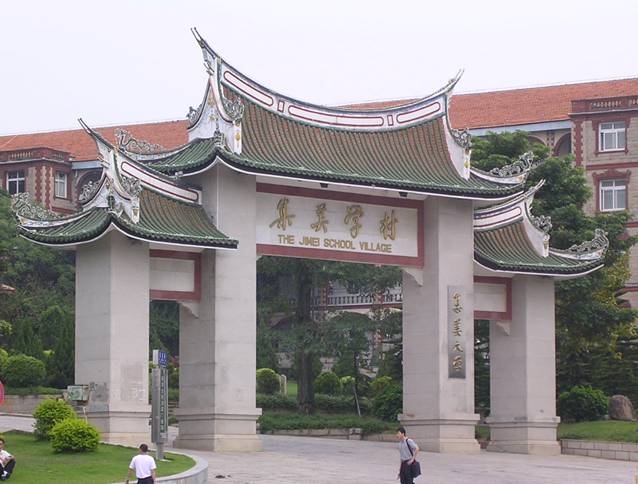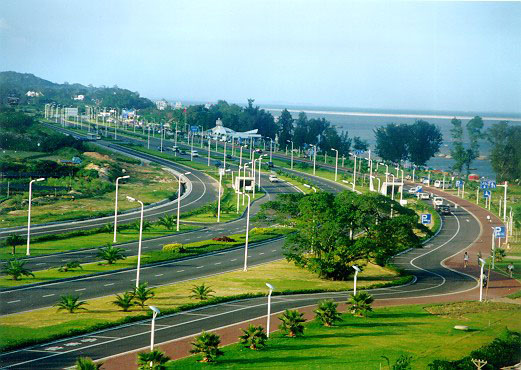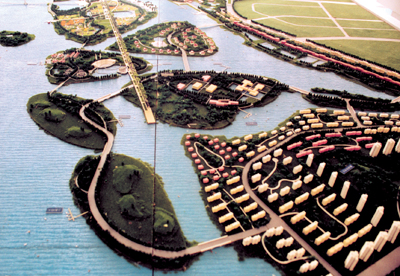|
|
|
|
|
Gulangyu Islet
Gulangyu Island, located to the southwest of Xiamen, is only about a five-minute journey by local ferry.
The name of the island means 'above-the-sea garden' because of its variety of pretty flowers, the best
of which can be viewed in the Shuzhuang Garden.
|
 |
|
The highest point on the island, the Sunlight Rock, is also the symbol of Xiamen city. Just as
the saying 'one who has not visited the Great Wall is not a true hero’; those who have not visited the
Sunlight Rock cannot claim to have truly seen Xiamen.
Gulangyu Island is also named “Island of Piano” after the well known piano museum with
various pianos of different periods from all over the world. Possibly due to the beautiful scenery
here, people living on the island have a strong liking for music, boasting the highest piano
ownership rates in China.
Gulangyu Island is by far the best sight of this beautiful town, with its variety of colonial
buildings, pleasant winding streets and musical locals. There are so many charming features, from
the profusion of ancient trees, all labeled, to the variety of seafood restaurants.
The Underwater World of the Islet has a variety of marine life exhibits worth visiting. |
| return top |
|
|
Nanputuo Temple
 |
Nanputuo Temple is known as “the Ancient Temple of
One Thousand Years”. It was built in Tang Dynasty (618-907) and is one of the famous ancient temples in
Minnan (South Fujian Province).
|
|
Tianwang Palace, Daxiong Palace, Dabei Palace,
Cangjing Palace, the side rooms, the bell and the drum buildings form a group of buildings which look magnificent of Buddhist
feature, showing the dignity of Buddhist laws.Tourists and local Buddhists often come here to pray, and this makes this Temple active and widely known.
You can also taste the unique and well-known vegetarian food of Nanputuo Temple.
On one side of Nanputuo Temple is situated the Minnan Buddhist College which was set up in 1925, and is a place to publicize the
Buddhist scripture and educate Buddhist followers. |
|
| return top |
|
|
Jimei School Town and Turtle Garden
Jimei, situated northwest of Xiamen Island, is the hometown of Tan Ka-Kee
who was a well renowned leader of the overseas Chinese. This site is full of buildings of south Fujian architectural style.
|
 |
|
Jimei School Town is not only a place for breeding talent
but is also a very beautiful place of interest. The most recommended site is the Dragon Boat Pond along
whose banks are buildings characteristic of the typical ancient Chinese style and at whose center are
two pavilions resembling two flying birds.
Another major resort in Jimei is Ao (Turtle) Garden, which was built by Tan Ka-Kee in 1950 with an area
of 8,990 square metres. Inside the Garden there are stone relief porches, the monument of Jimei’s
liberation, and the tomb of Tan Ka-Kee. Among the stone reliefs are carved characters that are vividly
presented in various postures and manners. |
| return top |
|
|
Hulishan Fort
 |
Only 1 km south of Xiamen University stands
the imposing Huli Mountain Canon Platform. Originally built in the Qing dynasty (1644-1911) to fend off foreign
imperialists,
|
|
the platform boasts a huge nineteenth century heavy artillery piece produced by the German
conglomerate Krüpp, with a maximum range of 10,000 metres. Currently the museum houses over 4,000 exhibits, including
intriguing rocks with natural paintings, ancient swords and guns. There is a mini-cannon here made by the Portuguese
which is only 11 cm long. |
|
| return top |
|
|
Island Ring Road
The Island Ring Road has a length of nearly 30 kilometres, and
is close to the sea. On the side near the sea, there are the Sea Rhythm Platform, the Moon-Playing Slope,
the Star-Counting Garden and the Yefeng Village.
|
 |
|
The Island Ring Road is designed and forested in an artistic
way which combines the sea, the beaches and the vegetated area into one, and therefore the Road becomes a
spectacular scene of beauty in Xiamen.. |
| return top |
|
|
Xiamen Garden Show Park
The Garden Show Park locates in Jimei Town, and covers an area of 6.76 sq kilometers,
consisting of five exhibition islands, four ecological scenic islands and two peninsulas.
|
 |
|
It mainly consists of the north China gardens,
Jiangnan gardens, Lingnan garden, international garden area, Fujian-Taiwan garden area, landscape engineer garden area and public garden
area, thus the Garden is a perfect miniature of the Chinese Garden art. |
| return top |
|
|
|
|
|
|